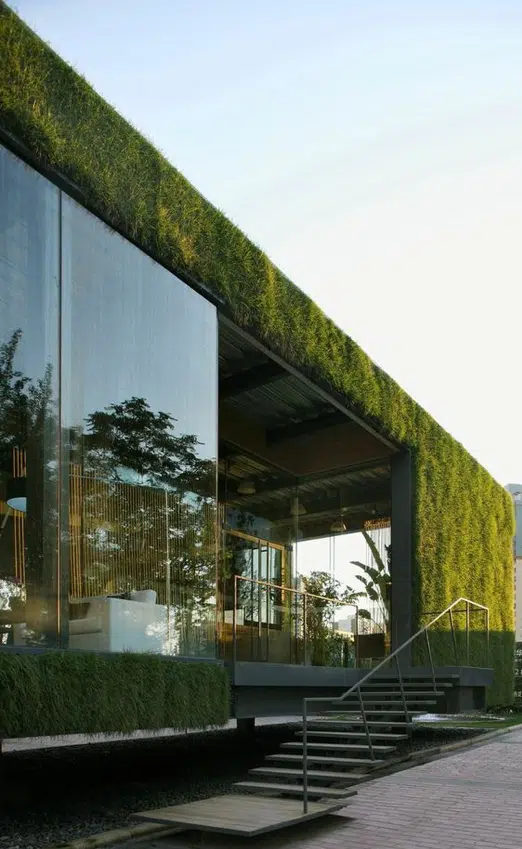ARCHITECTURE AND ECONOMY
Architecture has always been a mirror of the creative, engineering and technological prowess of a community over a period of time. But as we move along into the 21st century, architecture has evolved into more than just a practice of aestheticism and monument-building. Because of the immense pressure of the growing population, the value of land as a commodity is sky-rocketing. Therefore any kind of development taking place on a valuable piece of land carries an added responsibility of maximizing the economic potential of that land. Because of this very relation, architecture can be a useful tool for economic growth in a region, and the upcoming development in a region can be reliable markers for predicting trends or changes in the regional economy.
Now we discuss a major term in the development of the future architectural practice: Financial literacy: ’All architects need to ensure their financial and economic skills keep pace with the increasingly sophisticated and complex financial environment of the globalized economy’. Developing financial skills is a core value for practice if the firm were to deal with the future economic perils. A simply design-led practice cannot reach out to the extents the client’s needs anymore. Seeing beyond building a building now is a skill taken for granted by clients.

ARCHITECTURE AND ENVIRONMENT:
Architects need to make buildings that are friendly to the environment and more green which can be adaptable to the surroundings, in other words, they need to create buildings that are energy efficient, like green buildings or sustainable buildings which are designed to reduce the overall impact of the built environment on human health and nature.
So they need to take into consideration:
1-Efficiently using energy, water, and other resources.
2-Protecting residents’ health and improving people’s productivity
3-Reducing waste, pollution, and environmental degradation
Green buildings (green architecture) are a trend these days for their positive effect on the environment because they take landscaping into account. Green buildings also managed in the construction process to make sure that any waterways remain unpolluted with construction by-products.
Green buildings also have benefits that you’ll find luxury, like better indoor air quality. Many studies have found that they also lend themselves to a better work environment. These benefits which include the use of natural daylight, big windows, and good indoor air circulation, dramatically increase productivity and as residential buildings, they have substantial effects on their residents, as well.
Finally, the relationship between architecture and environment is very strong and can’t be denied as we see to have a sustainable and healthy environment we have to take good care of the buildings that are built in it and also to have sustainable buildings we have to take into consideration the environment surrounds it and its impacts.

Climate Change:
Climate change is one of the most pressing matters to look to when discussing future cities. Buildings and construction together account for 38% of energy-related CO2 emissions. The simplest and most impactful issue to consider regarding climate change is that the most sustainable building is the one that never gets built. Refurbishment over demolition is one of the most relevant trends to look at, since it not only saves money and time, but also decreases the impact we have on carbon emissions by eliminating the building process and demolition itself.
Energy efficiency in buildings is another way to reduce CO2 emissions.The entire industry is going through a transformation catalyzed primarily by BIM, which integrates the entire lifecycle of the built environment, and more recently, the Internet of Things (IoT). Put simply, sensor networks and building management systems track all sorts of data, providing deep insights into real-time performance, predicting potential issues, and delivering data to act on. Temperature control, power monitoring, water consumption, and real-time performance are all recorded and processed, alongside human behavior, making buildings responsive to our own interactions.

Disruptive Technologies:
The Fourth Industrial Revolution is unfolding rapidly as the digitization of human interactions increases at an exponential rate and the timeframe at which people adopt new technologies decreases. The digitization of the construction industry is today one of the biggest opportunities for investors, attracting the global attention of thought-leaders, innovators, and professional: architecture today some of the most promising area that can impact the future of humanity.

Relationship with nature:
Humanity currently faces major threats, including climate change and limited natural resources. Architects must take on these challenges and come up with better solutions. One way is through sustainable architecture. Only by having an economic focus through multiple facets of the architectural industry can we hope to protect our future environments and climate.
One of the main philosophies behind this trend is reducing waste and recycling space. This includes physical space as well as minimizing energy loss. You can incorporate this trend into your design ideas by looking at three main areas: materials, energy efficiency, and the location. If you look at these main areas and take a greater holistic approach, you can make sustainability part of mainstream architecture.

